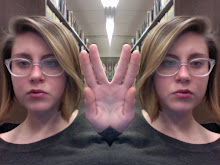When the S/S 11 collections came to a close, fashion writers, like any other season, tallied up the results. Ratings systems are devised, then inventoried, and finally distributed across print and digital publications. The glut of colors and silhouettes are consolidated into “must-have” sound bites that shoppers repeat with the reverence of an incantation.
For the casual observer, something gets lost in the mix. Only with studious attention can you begin comprehending what occurred in the long weeks between New York and Milan. Even then, the season is reduced to a blur of shapes that, in a number of years, reemerge as “staple” pieces that shift the content of our wardrobes, transforming the appearance of bodies as they move through space.
Appearance is tantamount to what fashion does to our bodies: it molds it into a shape that indicates status, cultural capital, and visual creativity. No film is more aware of this than Pretty and Pink, John Hughes’ 1986 film about a relationship that finds difficulty straddling the class divide in a wealthy suburb north of Chicago. The film’s main character, Andie (Molly Ringwald), is a lower class girl who constructs “volcanic ensembles” out of thrift store finds, much to the derision of her rich classmates.
The construction of a costume plays a key role in the montage near the end of the film where Andie makes her prom dress out of two poofy pink formal dresses. One of the film’s most iconic scenes, Andie rips, sews, and rearranges the fuschia lace and bright pink satins that make up the two dresses, judging them against the drawing she makes of her dream dress. Each shot in the sequence intersperses segments of Andie’s hands playing with the fabric alongside shots of Andie sitting in her room as she studies the styles of the two dresses, both of which embody the fairy princess prom dress.
Active construction is the piece that is missing from fashion week. The moving structures on the catwalk betray only the slightest hint of their creation. Each stitch is cemented, molded into space; there are no loose threads, at least not unintentionally. These clothes simply appear, much like different items appear and disappear if you visit a certain store over the course of several months. In other words, they don’t seem to leave a trace.
In designing her prom dress from two existing dresses, Andie literally retraces her steps, encompassing several decades’ worth of shape and form into a simple statement (which ironically, ends up rather shapeless and formless). This process emphasizes Valerie Steele’s observation that fashion is a palimpsest of past designs. Remembering the line of transmission from season to season doesn’t provide a hard and fast answer to fashion’s ‘meaning’ – I think that fashion’s 'meaning' is best summed up in The Social Network, when Mark Zuckerberg (Jesse Eisenberg), notes, “fashion never stops.” It does, however, momentarily fix the idea in place, the second between creation and exhibition, before it darts away.






No comments:
Post a Comment